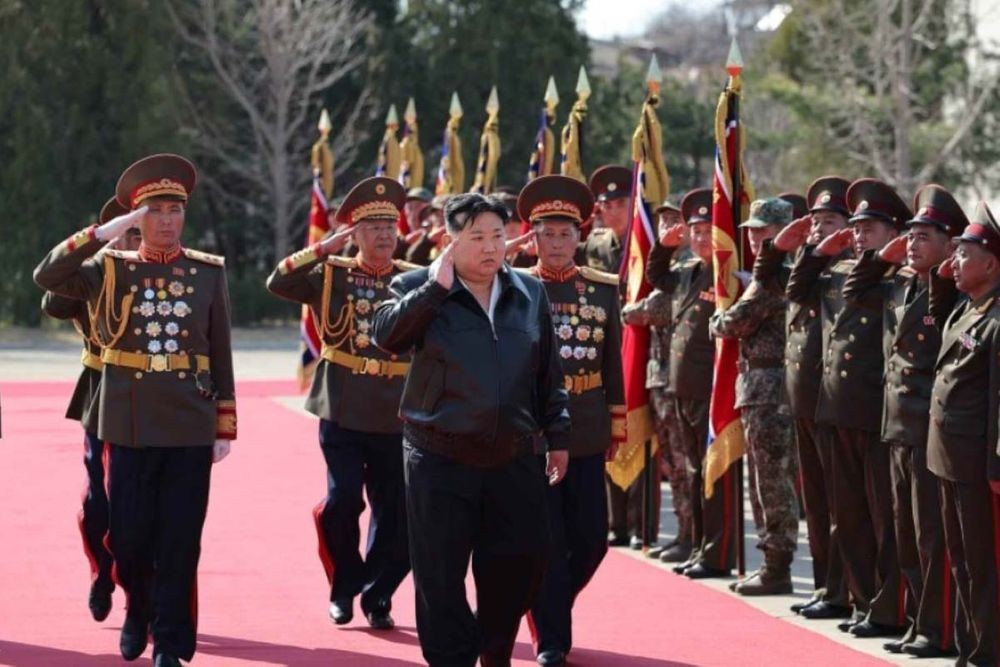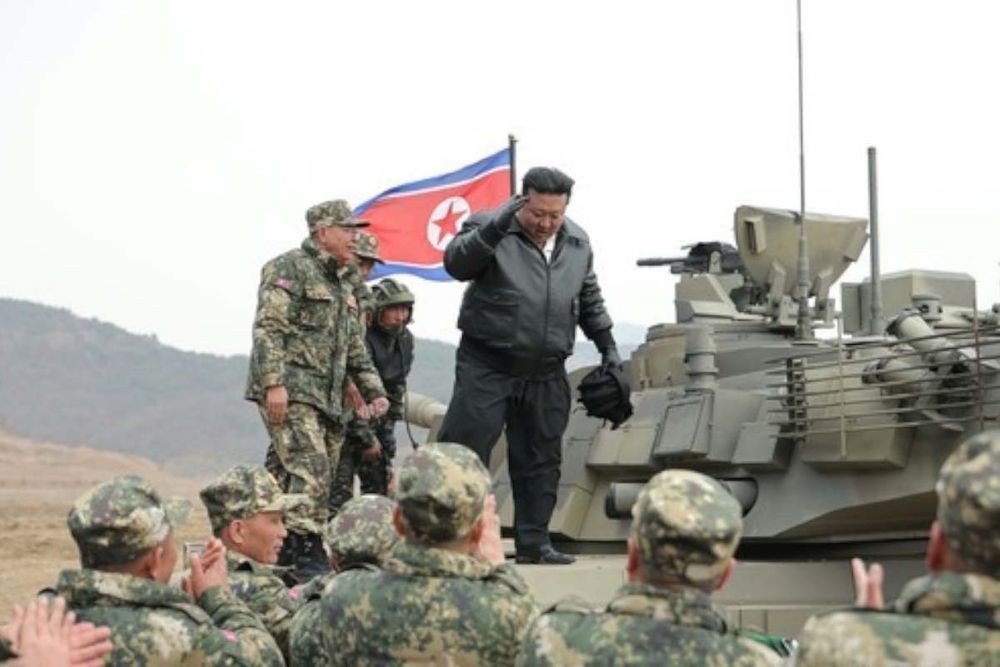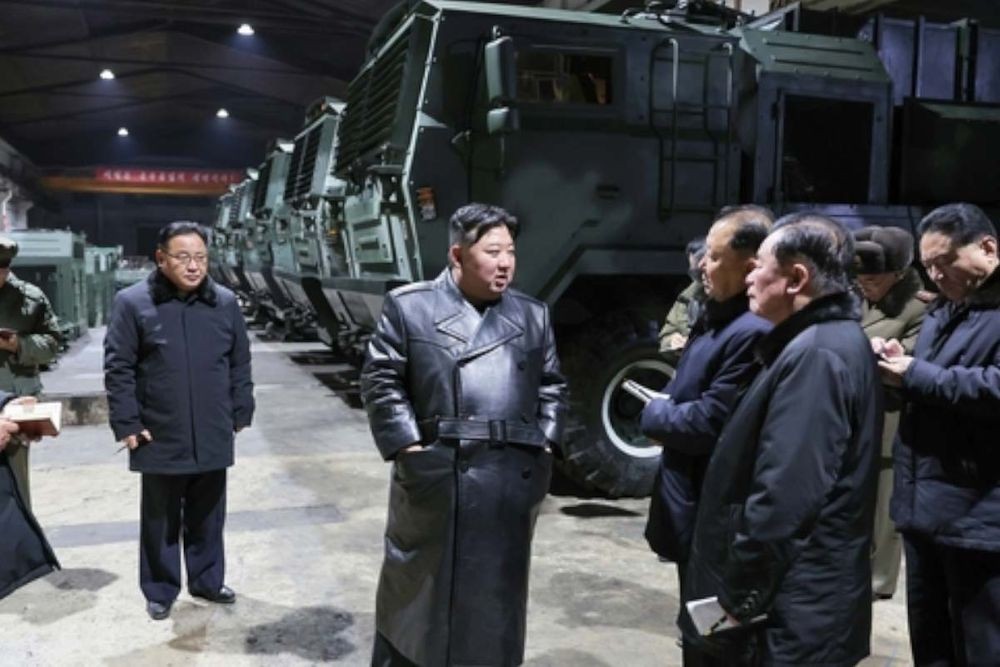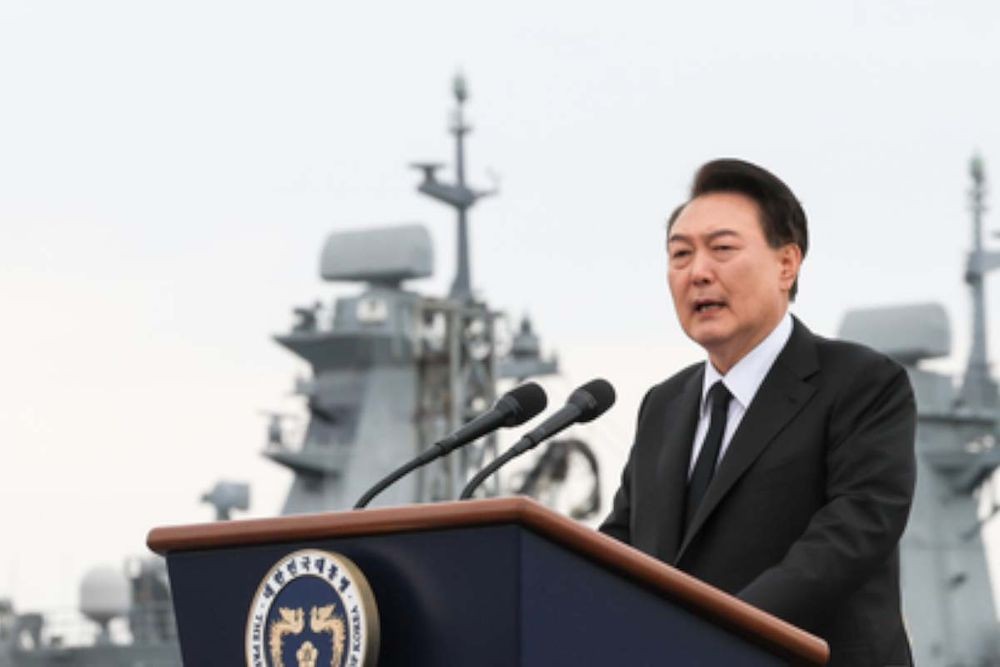North Korea’s new tank’s main gun is identical to the previous model
Kim Jong Un conducts military drills targeting South Korea 5 times
Yoon Administration vows not to step back from provocations

The recent joint ROK-U.S. military drill was undertaken successfully, and North Korea responded with a counter-drill. North Korea released images of Kim Jong Un in a new tank, claiming it to be the world’s most robust tank. However, a South Korean news media raised questions and launched an investigation.
Korean Central Television boasted about their new tank, saying, “It’s a great pride for our military to have built the world’s most powerful tank.” However, the central part of the new tank, the main gun, was identical to the previous model. Experts have evaluated that this latest North Korean tank cannot destroy the armor of the South Korean K1 tank.
However, they believe North Korea has compensated for the main gun’s inadequate performance by mounting an anti-tank missile called Bulsae on the side of the turret. An abandoned Soviet defense system intercepting shell was also added. Still, it was confirmed to be vulnerable to external attacks because it was mounted with a large hole in the turret. This self-propelled artillery has vulnerabilities, such as white smoke leaking from the middle of the barrel during launch and being engulfed in large flames.
Lee Il Woo, the director of the Korean Defense Network, pointed out the problems with the North Korean tank, saying, “The white smoke indicates a tiny crack in the part where the barrel and bore evacuator are combined, which can lead to an explosion in the barrel. The large flame significantly reduces range and accuracy.” He also noted that the AK-74 rifles used by (North Korean) special forces lack a scope, making accurate shooting difficult.
Shin Jong Woo, a senior researcher at the Korea Defense and Security Forum, stated, “North Korea has shown improvements in conventional forces since five years ago, around the time when it was completed focusing on nuclear weapons and missiles. It’s almost impossible to upgrade their forces to the level of the South Korean military overnight.” He analyzed that the new conventional weapons North Korea revealed are more propaganda than actual combat use.

In response to the joint ROK-U.S. military drill Freedom Shield held from March 4 to 14, North Korea conducted military drills targeting South Korea five times in March alone, with Kim Jong Un personally attending. Experts analyzed that North Korea carried out these five drills in a step-by-step escalation.
The live-fire drill at a major operational training base in western North Korea on the 6th aimed at striking South Korea’s frontline guard posts (GP), the artillery drill of the coalition forces on the 7th aimed at shelling the metropolitan area, the tank unit training on the 13th aimed at occupying Seoul and the metropolitan area, the paratrooper forces (airborne forces) training on the 15th aimed at infiltrating South Korea’s rear, and the super-large multiple rocket launcher firing on the 18th aimed at collapsing Seoul and military power structure. These drills target actual war outbreaks and development situations on the Korean Peninsula.
At the North Korean Workers’ Party plenary meeting on December 30, 2023, North Korean Leader Kim Jong Un declared, “We will push for preparations for a great war to conquer the entire territory of South Korea.” Since then, the North Korean military is confirmed to have been conducting drills based on specific operational plans. The strategy is evaluated as showing confidence that they can overwhelm South Korea not only with their boasted nuclear weapons but also with conventional forces such as artillery and tanks.

Meanwhile, some have predicted that North Korea’s new tank will face fuel shortages in actual combat due to economic sanctions and domestic economic difficulties. Ken Gause, Director at the Center for Naval Analyses, said in an interview with a media outlet, “The biggest problem that North Korean tanks will face is securing fuel for long-distance travel. North Korea is expected to have insufficient weapon fuel, so they will only be able to adopt a defensive posture without moving much.”
Fuel is an essential and fundamental requirement for equipment to function correctly during war. Fuel is directly related to a tank’s mobility and combat power and physically requires a large amount. The fuel efficiency of each country’s main battle tanks is analyzed to be about 200-400m per 1 liter of fuel, but the actual situation predicts worse fuel efficiency. For example, during the Gulf War, the US M1A2 tank, which weighs 63 tons, is said to have driven 50 meters per liter of fuel.
Analyzing the performance of North Korea’s new tank and its war execution capability, North Korean Leader Kim Jong Un’s dream of having “the world’s most powerful tank” is, for the time being, more of a hopeful aspiration than a reality.

On the 22nd, in response to North Korea’s five provocations since March, President Yoon Suk Yeol said, “If North Korea undertakes reckless provocations, they will certainly pay a greater price.”
President Yoon attended the West Sea Defense Day commemoration ceremony held at the 2nd Fleet Command in Pyeongtaek, Gyeonggi-do, in the afternoon and stated, “The government will further strengthen the US-Korea alliance and security cooperation among South Korea, the U.S., and Japan, which are the core of our security, and will strongly unite with our friendly countries.” He continued, “A fake peace obtained by compromising appropriately cannot protect our people and only puts our security at greater risk. Our government and military will never step back in the face of any provocation or threat from North Korea.” He conveyed the government’s firm stance.










Most Commented